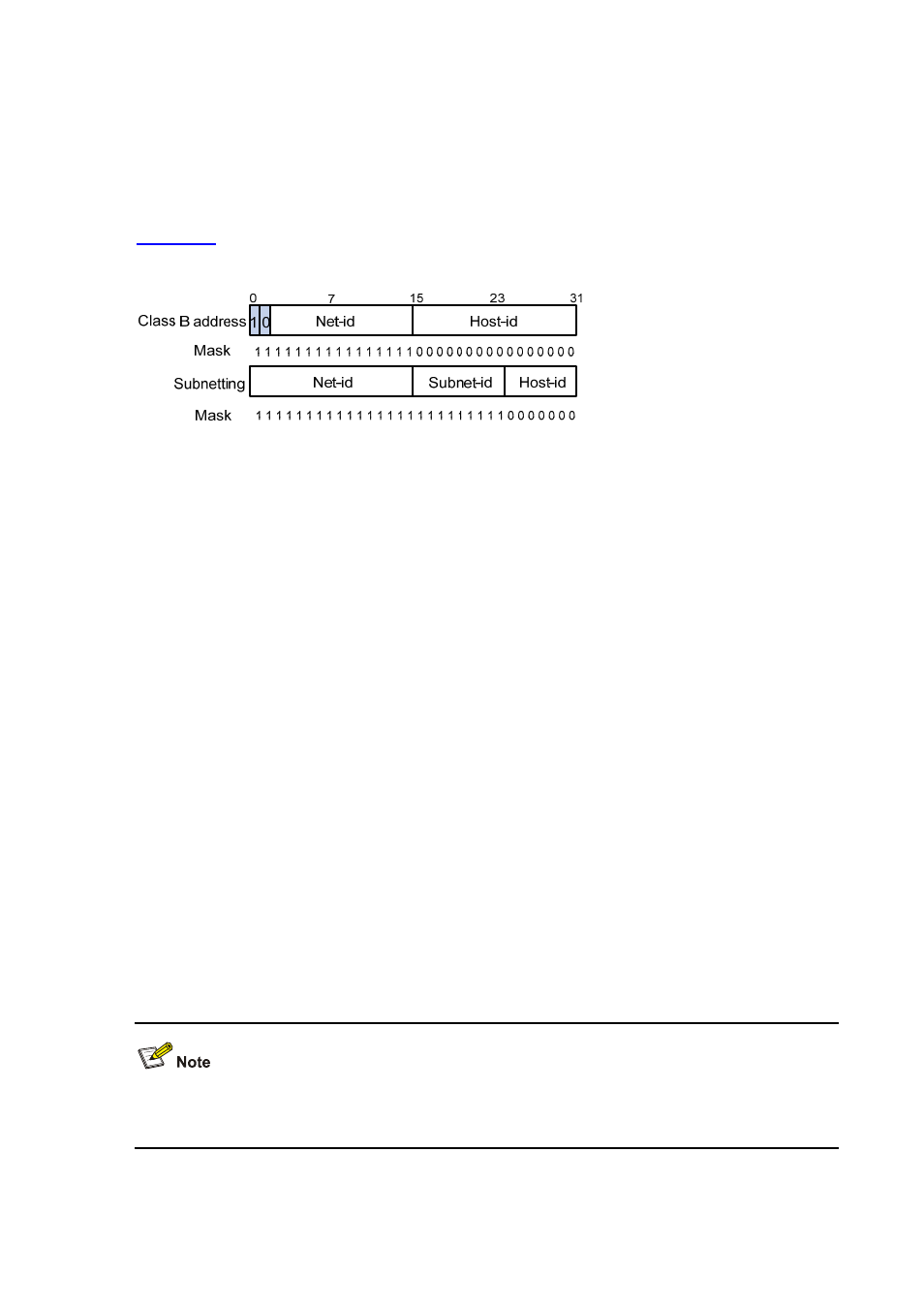Configuring ip addresses – H3C Technologies H3C WX6000 Series Access Controllers User Manual
Page 90

10-3
combination of net-id and subnet-id, masking is used. (When subnetting is not adopted, a mask
identifies the boundary between the host-id and the host-id.)
Each subnet mask comprises 32 bits related to the corresponding bits in an IP address. In a subnet
mask, the part containing consecutive ones identifies the combination of net-id and subnet-id whereas
the part containing consecutive zeros identifies the host-id.
shows how a Class B network is subnetted.
Figure 10-2
Subnet a Class B network
While allowing you to create multiple logical networks within a single Class A, B, or C network,
subnetting is transparent to the rest of the Internet. All these networks still appear as one. As subnetting
adds an additional level, subnet-id, to the two-level hierarchy with IP addressing, IP routing now
involves three steps: delivery to the site, delivery to the subnet, and delivery to the host.
In the absence of subnetting, some special addresses such as the addresses with the net-id of all zeros
and the addresses with the host-id of all ones, are not assignable to hosts. The same is true of
subnetting. When designing your network, you should note that subnetting is somewhat a tradeoff
between subnets and accommodated hosts. For example, a Class B network can accommodate 65,534
(2
16
– 2. Of the two deducted Class B addresses, one with an all-one host-id is the broadcast address
and the other with an all-zero host-id is the network address) hosts before being subnetted. After you
break it down into 512 (2
9
) subnets by using the first 9 bits of the host-id for the subnet, you have only 7
bits for the host-id and thus have only 126 (2
7
– 2) hosts in each subnet. The maximum number of hosts
is thus 64,512 (512 × 126), 1022 less after the network is subnetted.
Class A, B, and C networks, before being subnetted, use these default masks (also called natural
masks): 255.0.0.0, 255.255.0.0, and 255.255.255.0 respectively.
Configuring IP Addresses
Besides directly assigning an IP address to an interface, you may configure the interface to obtain one
through BOOTP or DHCP as alternatives. If you change the way an interface obtains an IP address,
from manual assignment to BOOTP for example, the IP address obtained from BOOTP will overwrite
the old one manually assigned.
This chapter only covers how to assign an IP address manually. For other approaches, refer to DHCP in
H3C WX6103 Access Controller Switch Interface Board Configuration Guide
.
This section includes:
